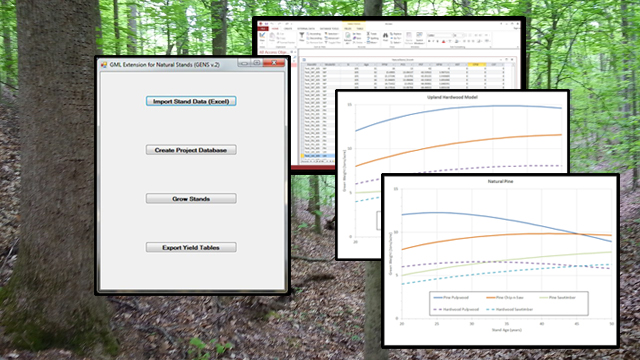September 9, 2018
https://www.linkedin.com/posts/activity-6444741014832902144-0-9L
 GENS interface, output, and growth trends
GENS interface, output, and growth trends
GML Extension for Natural Stands (GENS) was developed to supplement the growth of pine plantations provided by GML. GENS consists of volume growth functions for natural stands of pine, pine-hardwoods, upland hardwoods, and bottomland hardwoods with cypress. This Windows program is being migrated to ASP.NET and subscription services along with the main GML software.
Initial age, base age 50 site index, initial volume by product and species group, maximum age, and forest type are supplied to GENS by importing an Excel workbook. Volume growth is obtained by applying a compounded growth rate calculated from initial volume and volume for the grown age for a given site index. Results are stored in an Access database, and yield tables can be generated for use in optimization software.
Examples of growth for upland hardwoods and natural pine stands are shown for site index 75 in the graphs. As expected, the green weight of pine and hardwood pulpwood tends to decrease with increasing age, while pine chip-n-saw and both pine and hardwood sawtimber tends to increase.